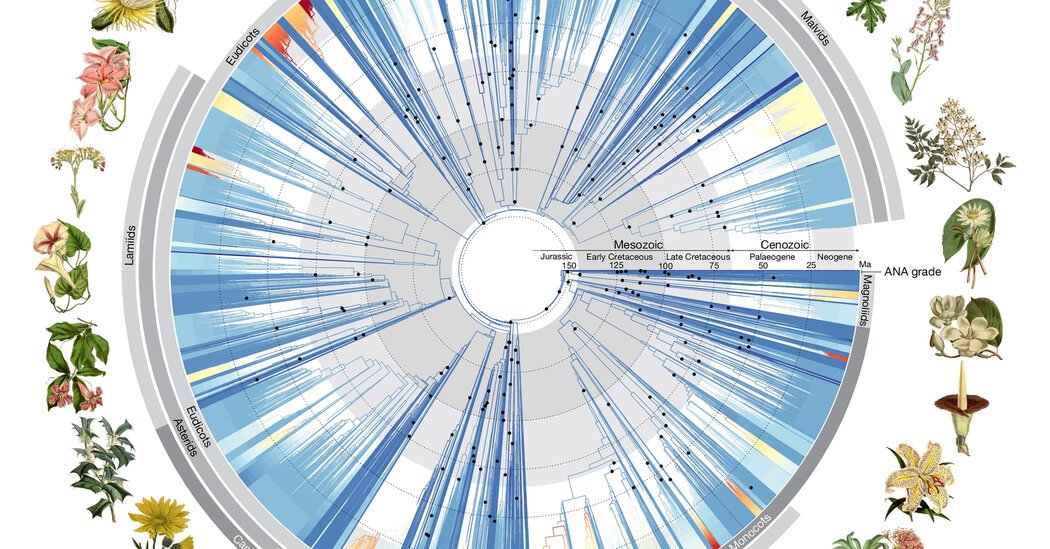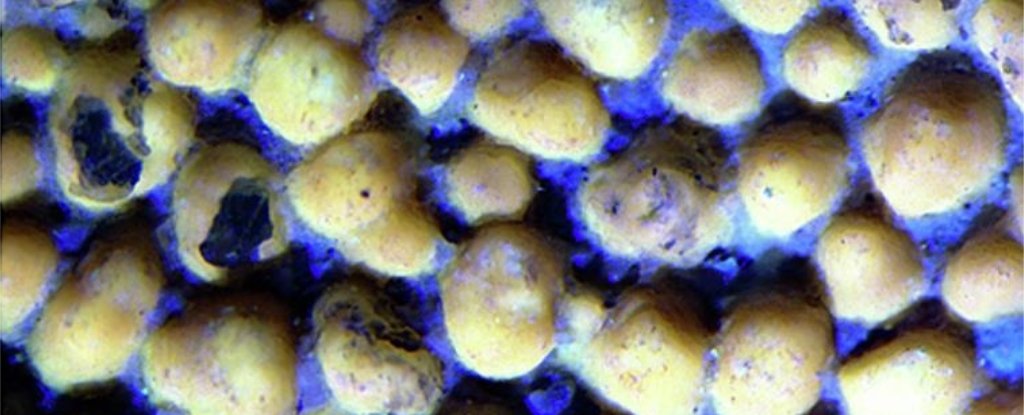Almost every plant we eat has a flower, and flowering plants populate every corner of the planet. But many questions remain about how and when this vast group emerged throughout the history of life on Earth.
Now, after a heroic DNA sequencing effort, a collaboration involving hundreds of scientists has created a new family tree for flowering plants. Comparing gene sequences from more than 9,500 species — many of them dried specimens preserved in museums — scientists have sketched important branching points in the evolution of flowering plant life. In a study published in April in the journal Nature, the data they present suggests that more than 80 percent of major modern flowering plant lineages originated in a sudden burst of invention that began around 150 million years ago, in the late Jurassic Period.
Previous evolutionary trees of plants built by scientists often used the genome of the chloroplast, the organelle that allows plants to perform photosynthesis. These genomes could be sequenced with older methods. But scientists could not be confident that the patterns they showed were the same as what might be revealed by the plant’s primary genome, stored in the cell’s nucleus and more difficult to study.
Then, five years ago, another scientific collaboration published detailed information about more than 1,100 plant species’ nuclear genomes. That allowed the team behind the Nature paper to design new tools for sequencing nuclear genes from a huge variety of flowering plants, said William Baker, who leads the Kew Gardens Tree of Life Initiative and is an author of the new paper.

They used the tools on living plants, but the team also reached out to institutions in 48 countries with collections of dried plants to get samples of rare specimens. Four of the plants included in the analysis are already extinct, including the Guadalupe Island olive, which was sequenced using a dried sprig from 1875. In the end, the team used data from about 60 percent of all modern genera of plants.
As they put the new evolutionary tree together, they found that it confirmed many of the relationships suggested by trees built from chloroplasts. However, there were surprises: The new data reshuffled the relationships of a number of plant groups, and some individual species were reclassified.
One finding that has surprised plant experts concerns a group of flowers that are so common, it’s easy to take them for granted. Asteraceae, a family that includes daisies and sunflowers, did not fit into the new evolutionary tree in a way that the researchers expected. Depending on how the new data was used to build the tree, the daisies’ links to surrounding flower families would shift, researchers found.
“In the past, when similar results were found, we used to blame the lack of data,” said Alexandre Zuntini, a biologist at Kew Gardens and an author of the paper.
But now, with data less scarce than it used to be, such anomalies in the natural history of flowers cannot be easily dismissed. While no one can say what may have caused the anomaly, Dr. Zuntini suggests one possibility is that swifter or messier evolution of that branch of flowers was occurring at the time.
The researchers also tried to link their evolutionary tree to known geological eras. On its own, the network of relationships shown by the DNA doesn’t contain any dates. It’s tricky to say, then, how many years ago a pair of species began to diverge.
But many flowering plants have been spotted in fossils, which can be dated. Using 200 fossils of flowers to add dates into the genealogy, the team pinpointed a great explosion in flowering plant diversity in the Late Jurassic and Early Cretaceous periods, when dinosaurs lived, starting around 150 million years ago. That supports estimates made in the past, Dr. Baker said. Another surge in species numbers came about 40 million years ago, the new tree suggests, amid plummeting global temperatures.
The team is sharing its sequencing tools, and hopes other researchers will make use of them. They also hope to add still more species to this evolutionary genealogy in the future, Dr. Baker said, as more data means a higher-resolution look at what happened in the past. Little by little, petal by petal, the history of flowering plants is coming into focus.










